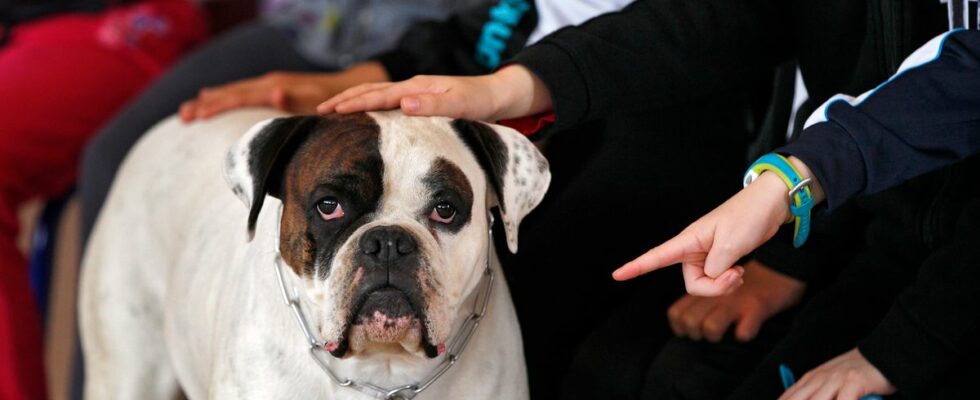MPs came to the rescue of pets on Monday evening. The National Assembly voted almost unanimously for a bill to ban so-called “training” collars, electric, chokes and spikes on dogs and cats, because of the suffering they cause.
Adopted at first reading by 111 votes to 5, this text must now be transmitted to the Senate. The only votes against came from the National Rally, which was also divided with 19 for and 6 abstentions.
Collars “not effective and counterproductive”
The bill was brought by Renaissance MP Corinne Vignon, in conjunction with the Brigitte Bardot Foundation. “Burns”, “loss of hair”, behaviors of “terror”, “paralysis”, the elected representative of Haute-Garonne denounced at the podium the “physical and psychological lesions” caused to animals by these coercive “training collars”. , “not effective and counter-productive”.
The Minister of Agriculture Marc Fesneau for his part welcomed “a step forward in the fight against animal abuse”, at a time when “societal expectations are increasingly strong” in this area.
The text aims to prohibit “the use on dogs and cats of any electric shock device, strangler without stopper or whose points are turned towards the body of the animal”. Any offender is liable to an administrative fine of 750 euros, or even 3,750 euros in the event of a repeat offense or for dressage professionals.
A derogation for the army
Added in committee, a derogation is provided for the services of the armies that use dogs and for operations to capture dangerous and stray animals. This exception for the military was however criticized by LFI Anne Stambach-Terrenoir.
The proposed law also prohibits the sale, expensive or free transfer and advertising of these “training collars”, liable to an administrative fine of 3,000 euros for a natural person and 15,000 euros for a legal person. The Brigitte Bardot Foundation is delighted that this text contributes to “putting an end to the mistreatment trivialized by the violent education of animals, whose physical sequelae and traumatic consequences increase the risk of dangerousness and lead to numerous cases of abandonment and euthanasia”.

